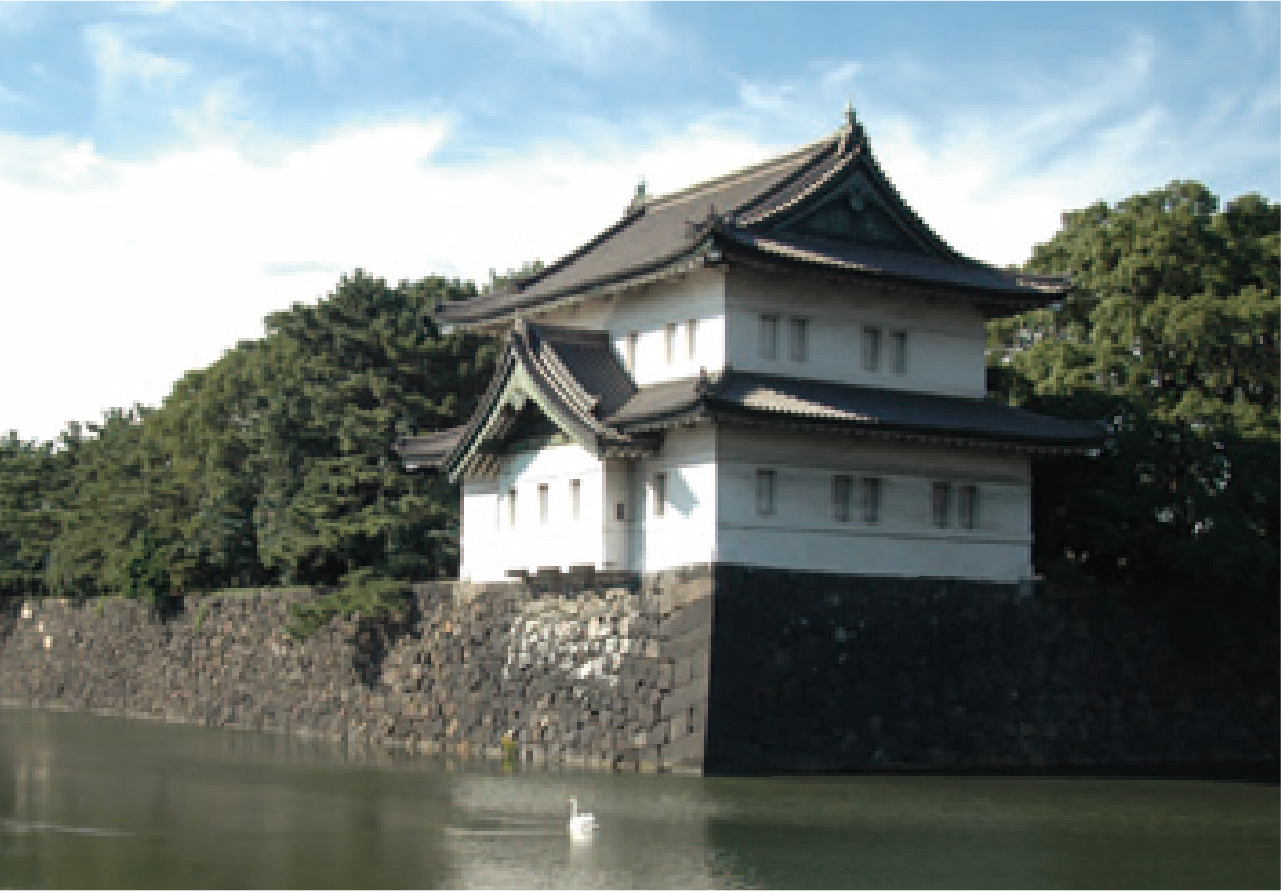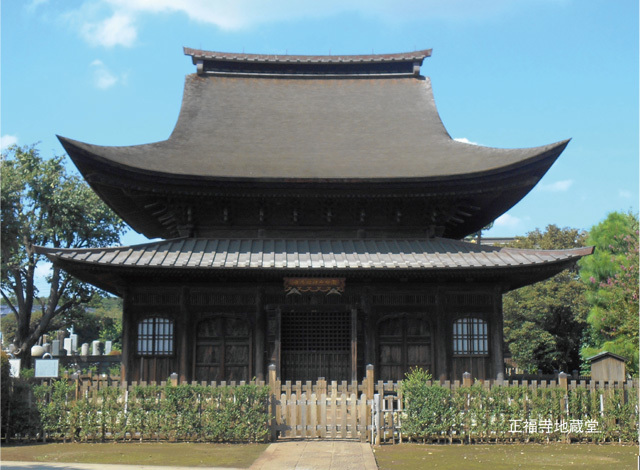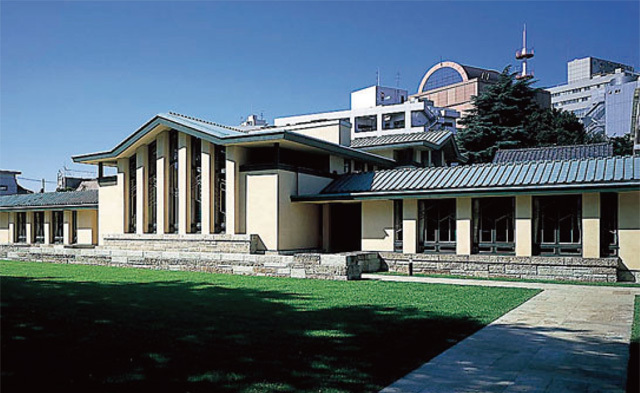
Minato city Course
Walking Course Highlights
Route Map


Minato city Course
1 The Tokyo Tower

©Tokyo Tower
The Tokyo Tower was built for the purpose of transmitting broadcast waves in 1958. Its height is 333m. The Tower is taller than the Eiffel Tower in Paris and was the world's tallest self-supporting steel tower at that time. The tower has been popular with people as the symbol of the recovery of postwar Japan and the origin of Japan's rapid economic growth.
Opening times
- Date :
- Year-round
- Time :
- Main Observatory (150 m) : 9:00-22:00(Last admission 21:45)
Special Observatory (250 m) : 9:00-21:30(Last admission 21:00)
- Charge
- [Main Observatory (150 m)]
Adult (senior high school students or older) : 820 yen, Children (junior high school students and primary school pupils) : 460 yen, Children (4 years old and over) : 310 yen
[Special Observatory (250 m)]
Adult (senior high school students or older) : 600 yen, Children (junior high school students and primary school pupils) : 400 yen, Children (4 years old and over) : 350 yen
Information of free or discounted of charge is available on the homepage.
- Access & Required Time
- 5-min walk from Subway Oedo Line Akabanebashi Station / 7-min walk from Subway Hibiya Line Kamiyacho Station / 6-min walk from Subway Mita Line Onarimon Station / 10-min walk from Subway Asakusa Line Daimon Station / 15-min walk from JR Hamamatsucho Station
∗ As to the Korean and Chinese (both original and simplified characters) verseions, please check Tokyo Tower official website.
Minato city Course
2
Zojo-ji Kyozo
(A repository and storehouse of Zojo-ji temple)

Zojo-ji was founded by Yuyo Sosho in 1393 as Jodo-sect orthodox dojo for Buddhist invocations of Jodo-sect in Musashinokuni Toshimagun Kaizuka (Chiyoda city). Since 1598, it was relocated to its current place. In 1609, based on the Jodo doctrine, it was extended by the Edo government to a Dai-garan (temple complex) consisting of main building, Sanmon (enlightenment gate), Kyozo, Omotemon (main gate), Hojo (residence), dormitories and other small buildings. Once Zojo-ji became the family temple of Tokugawa Shogun and the most important among 18 Jodo-sect study-temples in Kanto area, religious and political decisions of Jodo-sect were made there. Kyozo was constructed in 1613, relocated and remodelled in December 1681 and finally moved to its current place in June 1802. Kyozo contains wooden octahedral sutra storage shelves that smoothly revolve around the central pillar. So, Gen and Korai editions of Daizokyo (Sutra in China), which were donated by Ieyasu Tokugawa, were kept in those shelves (They are important cultural properties, and are currently kept in a different place).
Opening times
- Date :
- Unscheduled (Please refer to the Zojoji Temple website)
- Time :
- 10:00 - 15:00
- Charge
- Free
- Access & Required Time
- 4-7-35 Shibakoen, Minato-city
Close to Subway Mita Line Onarimon Station/Subway Asakusa Line & Oedo Line Daimon Station/JR Yamanote Line & Keihin Tohoku Line Hamamatsucho Station
- Notes
- No smoking, lavatories : provided, photography prohibited
Minato city Course
3
Zojo-ji Sangedatsu-mon
(Zojo-ji Temple Gate of the Three Liberations)
Zojo-ji, which used to be called Komyo-ji, was originally located near Kioi-cho Chiyoda City. It was later renamed to its present name and moved to the current place in Shiba, Minato City in 1598, after Tokugawa Ieyasu declared it as a bodhi temple. It was previously believed that Sangedatsu-mon was also built in Keicho period (1596-1615). However it was found out in 1974, while being partially dismantled due to subway constructions, that it was actually built in 1622 during Genna era
.Sangedatsu-mon, the middle gate in Zojo-ji, is located halfway between the Daimon, which is the entrance gate, and the temple's main building . Sangedatsu-mon means that, by entering, one can free himself from one of three worldly desires: "greed, hatred or foolishness". It is a 5-bay wide gate with 3 entrances in the centre bays. This two-storied gate with a hip-and-gable roof is finished with red lacquering. With Sanro and Tsunagibei at both sides, Sangedatsu-mon is one of the largest gates in east Japan, including Tokyo. Although it is mainly Zen style, the added rails of the balustrade in Japanese style makes the gate more beautiful. This gate, which makes us imagine the grand-scale of Zojo-ji, is precious as it is the only architecture in the temple, which reminds us of the fact that Zojo-ji was built in the early Edo period.
The second story of the gate building enshrines statues of Gautama Buddha and 16 arhats.
Opening times
- Date :
- Year-round (viewing from outside only)
- Time :
- 9:00 - 17:00
- Charge
- Free
- Access & Required Time
- 4-7-35 Shibakoen, Minato City
Close to Subway Mita Line Onarimon Station/Subway Asakusa Line & Oedo Line Daimon Station/JR Yamanote Line & Keihin Tohoku Line Hamamatsucho Station
- Notes
- No smoking, lavatories : provided, photography prohibited
Minato city Course
4
Shiba-Toshogu no Icho
(Ginkgo biloba at Shiba-Toshogu)

This ginkgo tree is on the relatively small ground of Toshogu, which is directly east of Shiba Maruyama tomb. Although it's an urban area, the location is in a rich environment, surrounded by Shiba park on the south side, a parking area on the north side and the approach of Toshogu on the east side. It is believed that the 3rd Shogun, Iemitsu Tokugawa, planted it when Toshogu was rebuilt in 1641. Although the tip of the trunk and the branches are damaged, this is one of the most giant trees in Tokyo with 21.5 m hight, a trunk circumference of 6.5 m (about 1.2 m above ground) and a circumference of 8.3 m at ground. It was designated as a secondary class monument (local monument) and national treasure by a law passed to protect historical sites and national treasures in 1930. In January 1656, based on the present law for Protection of Cultural Properties, it was once removed from the list of secondary class monuments and national treasures, and later designated again by the Tokyo ordinance of Protection of Cultural Properties. This ginkgo tree has witnessed the transition of Zojo-ji and Shiba park, which are located around.
Opening times
- Date :
- Year-round
- Time :
- 7:00-19:00
- Charge
- Free
- Access & Required Time
- Inside the Toshogu Shrine, 4-8-10 Shibakoen, Minato City
2-min walk from Subway Mita Line Shibakoen Station, 7-min walk from Subway Oedo Line Akabanebashi Station
- Notes
- Keep out of the fence around the ginkgo.
Minato city Course
5 Shibamaruyama Tomb Mound

The Shibamaruyama tomb mound is one of the largest keyhole-shaped tomb mound in the Metropolitan Area. It is located on a tip of a plateau including the Shiba park, at an altitude of about 16 m. Its rectangular mound portion heads for the south-southwest, and as per size, it is about 106 m long in total, with its circular portion having a diameter about 64 m, its rectangular mound portion a width of about 40 m at the end and a narrowed portion a width of about 22 m.
Several circular tomb mounds located around were dug away together with the plateau in the Edo Period and later, and a portion of the Shibamaruyama tomb mound was left. The original contour underwent substantial changes, in particular a top of the mound and the west side of the circular portion have been taken off. In 1898, Dr. Tsuboi Shogoro of the Tokyo Imperial University, a pioneer in archeological studies in Japan conducted excavations, and at that time, the main body (burial facility) which is believed to be located in the center of the circular portion had been already lost, and circumstances on the body/-ies and burial accessories are not known, except an existence of clay figures.
A construction of the mound is estimated to date back to 5th century, on the grounds of the narrow and low shaped rectangular mound portion, as well as land use. The mound is believed to be a tomb of one of the most powerful and wealthy families in Minami-Musashi (covering the areas of today's Tokyo and Kanagawa Pref.).
Opening times
- Date :
- Year-round (The mound is in the park. So you can come to see the mound anytime.)
- Time :
- 24 hours a day
- Charge
- Free
- Access & Required Time
- 12-min walk from JR Hamamatsucho Station / 2-min walk from Subway Mita Line Shibakoen Station / 5-min walk from Subway Mita Line Onarimon Station / 5-min walk from Subway Oedo Line Daimon Station / 5-min walk from Subway Asakusa Line Daimon Station / 2-min walk from Subway Oedo Line Akabanebashi Station
Minato city Course
6 Kyu Shibarikyu Tei-en (Former Shibarikyu Garden)


Kyu Shibarikyu Tei-en has an origin in the Rakuju-en garden, attached to a detached residence in Shibakanasugi. This garden was granted by the shogun Tokugawa Ietsuna to Okubo Tadatomo, Roju or senior councilor and later appointed as a lord of Odawara domain in Sagami Province. Based on the passages in Rakuju-en ki (Records on Rakuju-en Garden) handed down by the Okubo family, we can assume that the gardening works were completed by 1686.
The garden is a so-called stroll style garden which has a large pond with a largely folded shoreline; in the pond, three small islands, called respectively Oshima, Nakanoshima and Ukishima, are arranged. Further, long banks are built on the east and the west of Nakanoshima. Sand bars are provided on the north and the west of the shore of the pond, while stones are arranged so as to represent dry waterfall on the south side. An artificial mountain in stones on Nakanoshima, called Horaijima, is allegedly a structure from the time of an original gardening. The area for the garden was expanded in 1696, by landfilling and receiving a grant of a plot 27 m long from east to west and 226 m long from north to south, in an area close to the sea on east side. The Rakuju-en garden was transferred in 1818 to Hotta Clan, the lords of Sakura domain, who then used the garden as a lord's own residence in Edo. Thereafter, the garden was owned by Shimizu Clan, one of Gosankyo, three branches of the line of Tokugawa Yoshimune, and later by Tokugawa Clan of Kii Province who used the place as their residence in Shiba. Finally the garden was transferred to the Ministry of the Imperial Household in 1875 and renamed Shibarikyu in the following year.
Opening times
- Date :
- Year-round (Closed : from December 29 through January 3)
- Time :
- 9:00-17:00 (Admission closes at 16:30 : from December 29 through January 3)
- Charge
- General admission 150 yen, 65 yrs and older 70 yen (Free of charge for elementary students and younger, junior high students living in Metropolitan Tokyo)
- Access & Required Time
- 1-4-1 Kaigan, Minato City
1-min walk from JR Yamanote Line Hamamatsucho Station (North Exit), 5-min walk from Subway Asakusa Line/Oedo Line Daimon Station
- Notes
- lavatories : provided
Tokyo Cultural Heritage Map
Would you like to go around cultural heritages? In Tokyo, there are various cultural heritages. This map helps you go around cultural heritages with efficiency during limited time in your trip. Japanese traditional temples and shrines, the cultural heritages concerned to most famous events and person in Japan and a lot of nature. This map introduces all of them widely! You must watch them and know the history and the culture of Tokyo!

SNS




















